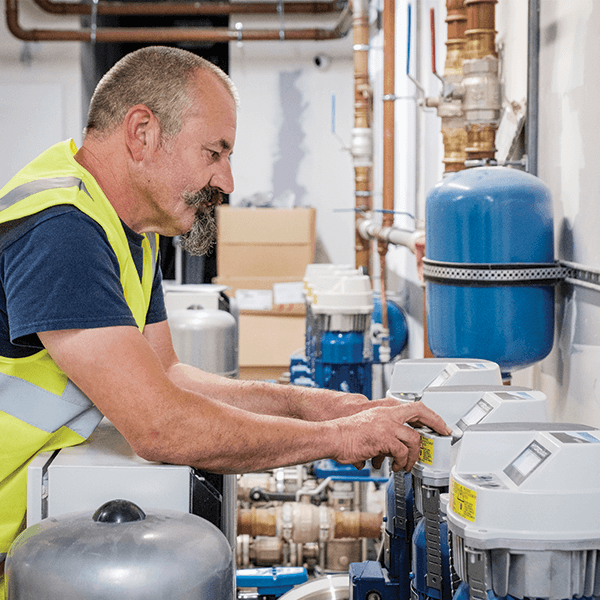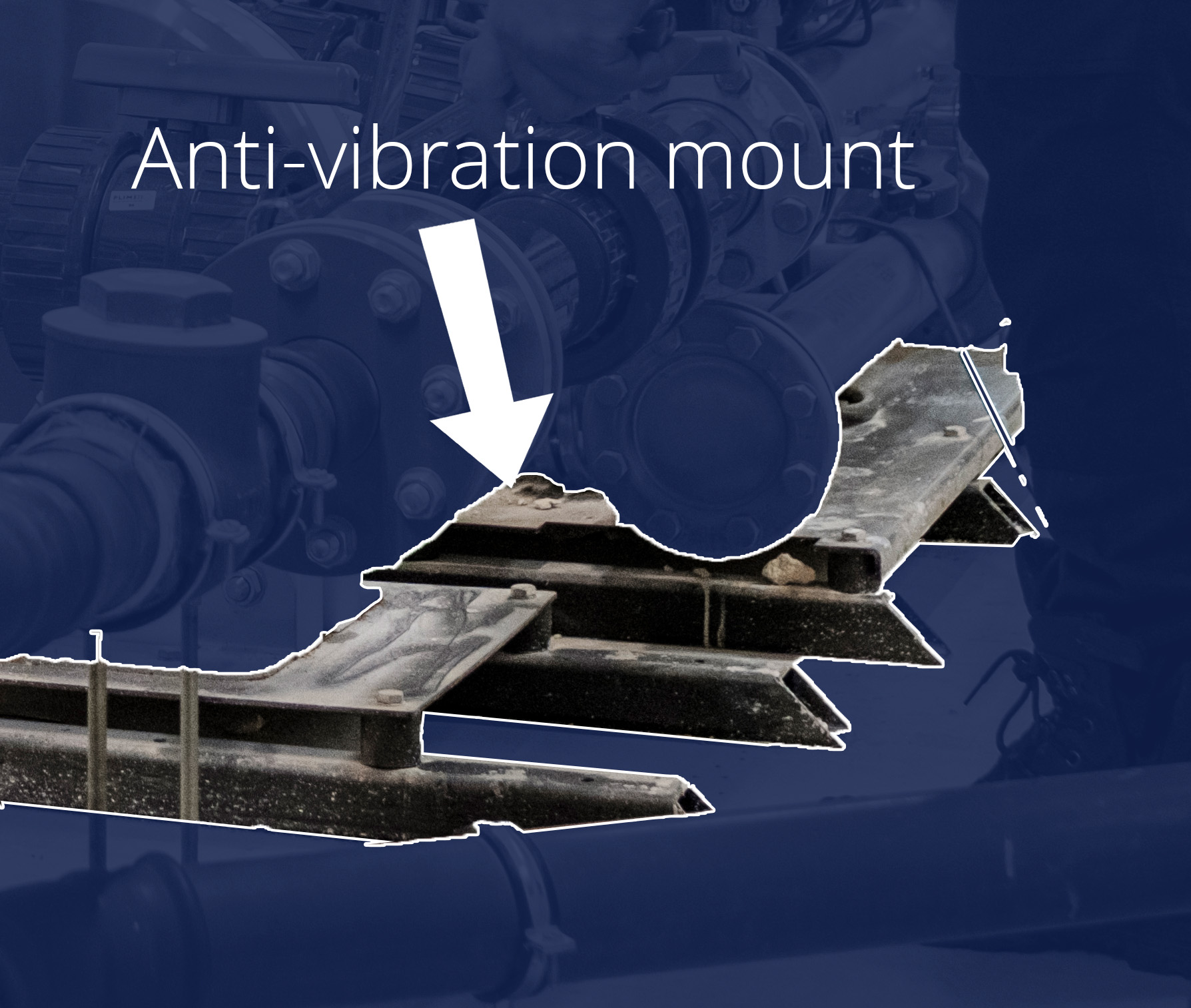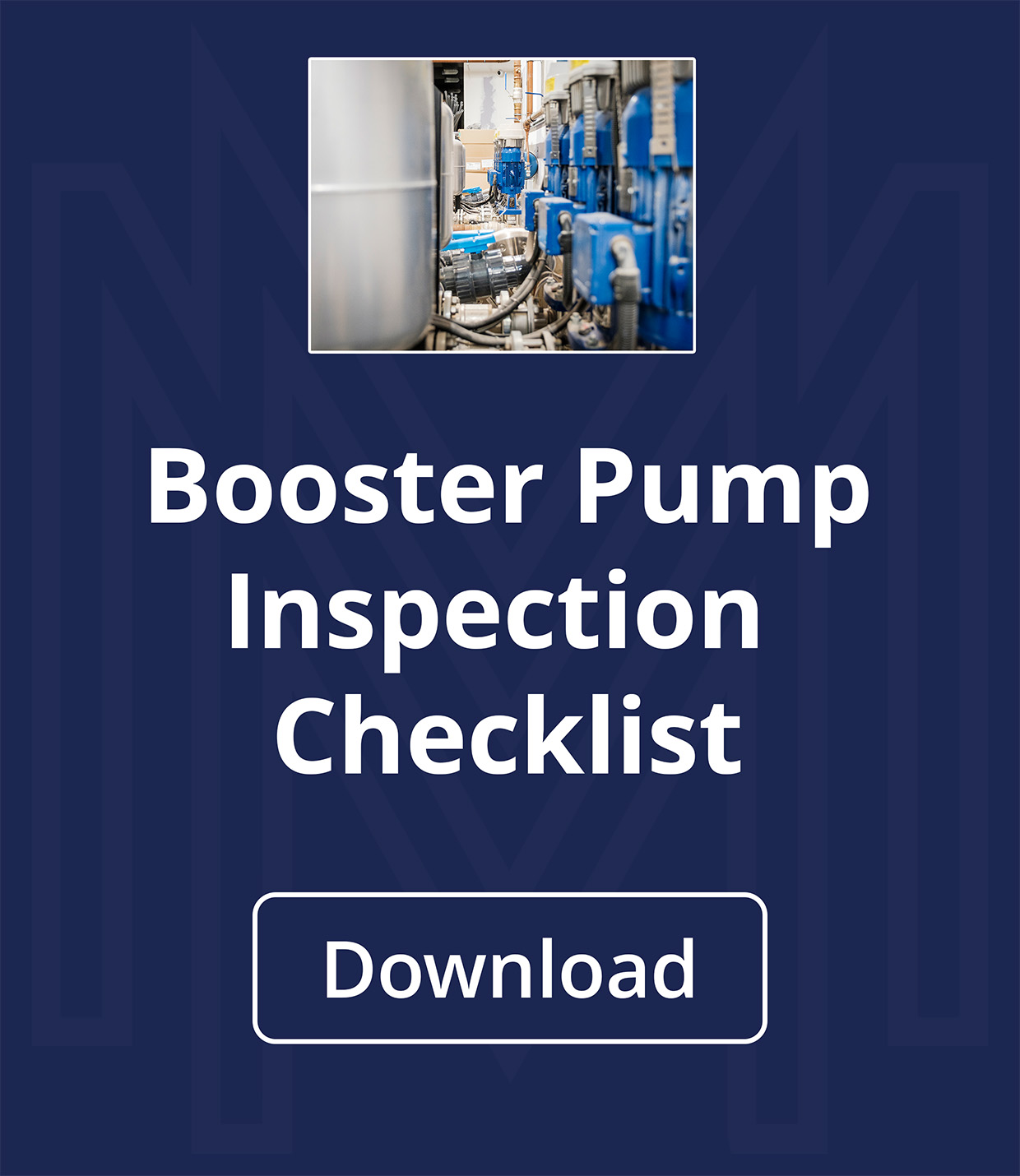If you’re a facilities manager, public building owner or a tenant living within an apartment or block of flats; you will understand the vital role an efficient booster pumping system plays – providing water of sufficient pressure to every water point within the building.
However, one of the main reasons we are called out to attend booster pumping systems is due to noise coming from the system, attracting complaints from residents who may have been woken in the early hours of the morning by the pump.
In our latest blog post, we’ll cover off reasons why booster pumps make noise, how you can control it and essential regular maintenance checks you can carry out to ensure your pumping system runs efficiently without generating excessive noise.
Why Do Booster Pumping Systems Make Noise?
The key reasons booster pumps make noise are:
- Higher water demand than the pump can facilitate.
- Pump positioned incorrectly.
- Worn components such as bearings.
- Old or unmaintained pump.
- Excessive vibration from the pump.
- Excessive vibration from pipework within the building.

How Can I Stop My Booster Pumping System Making Noise?
With a few controls and proper maintenance, noise from booster pumps can be adequately controlled without impacting on the performance of the system:
Use the Right Pump for the job
Using the right tool for the job is key to achieving any task, and it’s the same with your pumping system. In older buildings, we often find that older and inefficient systems are being used to boost water pressure.
Not only does this mean lower efficiency and higher bills, but during times when everyone in the facility is using water, such as the morning shower, all pumps in the booster set are needed to provide adequate water, creating excessive noise.
In an efficient system that’s tailored to building requirements, the whole bank of boosters would never need to run simultaneously to supply the amount of water required.
Position the Pump Correctly
Following the selection of the most suitable pump for the job, the location of the pump is essential for achieving zero sound disruption for building users. In most cases, we recommend that the pump be installed in an enclosed space such as a soundproofed control room.
If your pump is already set in place and relocation would be impractical and expensive, it is still possible to erect a control room or sound barrier around the pump to reduce noise.
Note that regardless of your pump positioning, if you are using an inadequate system, complete cancellation of noise will be difficult to achieve.

Use Vibration Isolators
One of the most common causes of noise from booster pumps is vibrations; these vibrations generally come from the pipes or the pumping system itself vibrating against the structure of the building.
Using vibration isolators is a cost-effective way of reducing noise from your pump – the most effective method will depend on the level of vibrations your system is producing:
Low Level of Vibration – If your pumping system is producing a low level of noise and vibration, a vibration mat is a simple and cost-effective method of control. This is essentially a thick mat or pad on which the pump is placed to prevent vibrations from being carried up the building.
Mid Level Vibration – If your pumping system is producing a medium level of noise and vibration, vibration springs or mounts can be fitted, which absorb the vibrations coming from the pump.
High Level of Vibration – If your pump is producing a high level of vibrations, an inertia base can be constructed – this is a robust measure that will absorb the maximum amount of vibration.
Vibrations Coming from Pipework – If you find that the vibrations are coming from your pipes as opposed to your pump – fitting vibration isolators such as springs to pipework will prevent them from vibrating against the building.
If you find your pump is vibrating excessively or the vibrations are getting worse over time, call a specialist to come and inspect – it could be that vital components within your pump have become damaged.
Ensure Pump is Properly Maintained
As pumping systems age, vital components such as bearings wear down – creating unwanted noise. It is essential that these components are regularly inspected and replaced as required to prevent noise and further damage to the system.
Putting a proper pump maintenance plan in place is the most effective and cost efficient way of controlling noise and preventing failure within your system.
Essential Maintenance Checklist for Booster Pumping Systems
If you are responsible for the maintenance of the booster pumping system within a facility, we recommend carrying out a visual inspection once a week to ensure you can deal with problems before they develop; During your inspection, you should do the following:
- Check all valves for free travel.
- Check water and air pressure gauge.
- Test alarm.
- Inspect and lubricate bearings as required.
- Check for any damage to the pump or any of its main components.
- Take note of any unusual noises or ‘struggling’ from the system during start-up.
- Take note of excessive vibration or unusual noise from the pump.
- Take note of the temperature within the room.
To help keep on top of routine maintenance, we have created a free inspection checklist for responsible persons. Click the button below to download your copy.
Ensure Pump is Properly Maintained
As pumping systems age, vital components such as bearings wear down – creating unwanted noise. It is essential that these components are regularly inspected and replaced as required to prevent noise and further damage to the system.
Putting a proper pump maintenance plan in place is the most effective and cost efficient way of controlling noise and preventing failure within your system.
Essential Maintenance Checklist for Booster Pumping Systems
If you are responsible for maintenance of the booster pumping system within a facility, we recommend carrying out a visual inspection once a week to ensure you can deal with problems before they evolve; during your inspection, you should do the following:
- Check all valves for free travel.
- Check water and air pressure gauge.
- Test alarm.
- Inspect and lubricate bearings as required.
- Check for any damage to the pump or any of its main components.
- Take note of any unusual noises or ‘struggling’ from the system during start-up.
- Take note of excessive vibration or unusual noise from the pump.
- Take note of the temperature within the room.
To help keep on top of routine maintenance, we have created a free inspection checklist for responsible persons. Click the button below to download your copy.
Nationwide Booster Pump Installation, Repair and Maintenance
At Mawdsleys Pumps, we provide an all-encompassing service for the design, installation, ongoing maintenance and emergency repair of booster pumping systems, we can also provide solutions for booster systems that are creating excessive noise.
Whether you are considering a booster pumping installation or experiencing noise or underperformance from your existing system – we can help. Give us a call today on 0117 954 8030 or fill out the form below and one of our team will get back to you.




